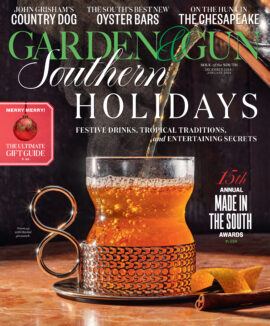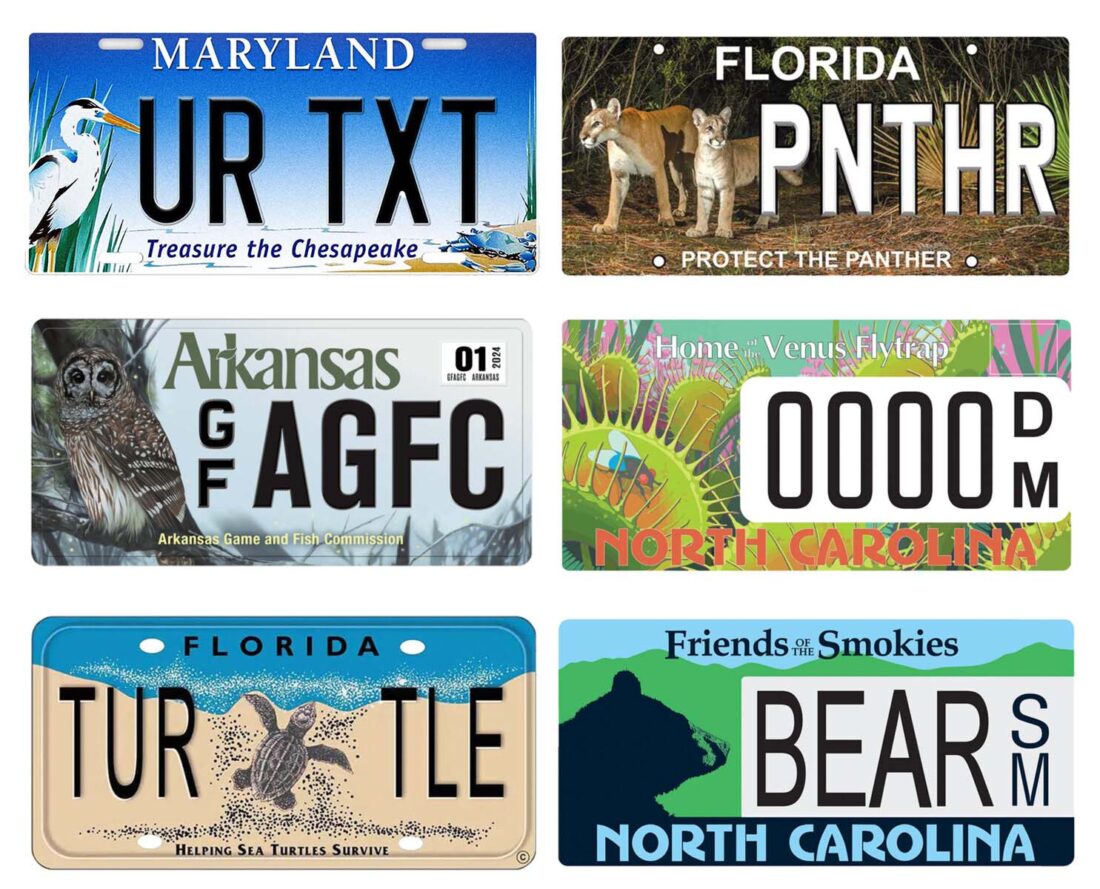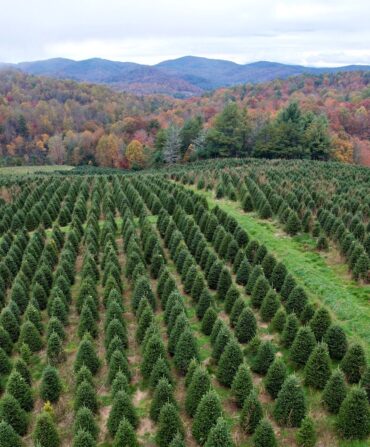“Specialty license plates can generate real conservation dollars,” says Damon Waitt, the director of the North Carolina Botanical Garden in Chapel Hill. Maryland, for example, offers a highly successful plate aimed at protecting the Chesapeake Bay, and Florida plates have raised millions of dollars for manatees, panthers, and sea turtles. Now, Waitt has finally seen a decades-long effort to secure a Venus flytrap license plate in North Carolina come to fruition.

“The Venus flytrap is the panda bear of plant conservation,” he says. “It’s such a unique and well-known plant, and North Carolina needed to claim it.” (The plant is native to a roughly eighty-mile area near Wilmington.) He hopes drivers will spring for the vibrant design, the work of Durham-based botanical artist Preston Montague. Its $20 price tag (on top of normal plate fees) will support the botanical garden’s efforts to conserve the flytrap along with other rare native plants.
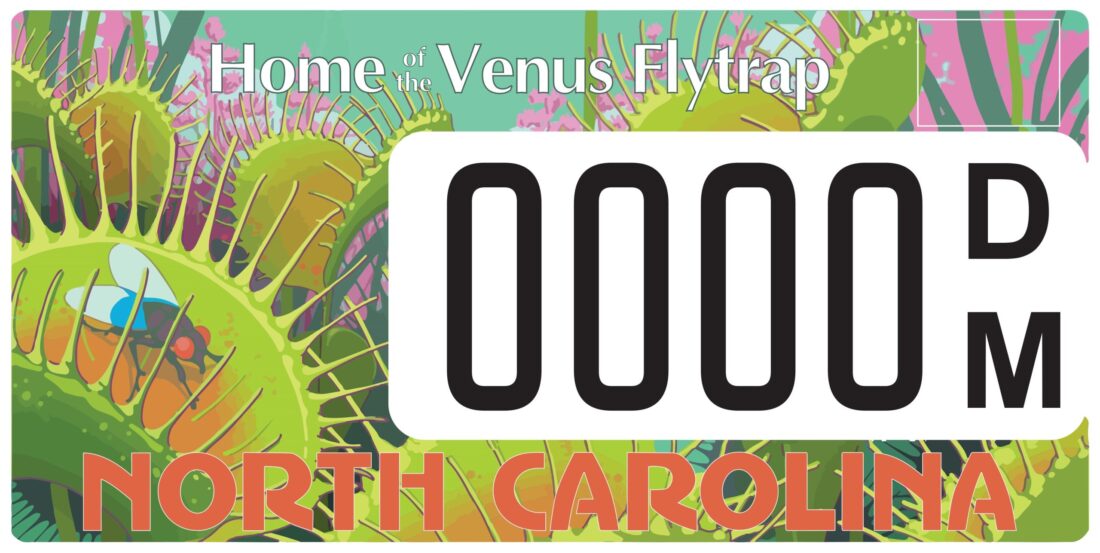
The design is the latest addition to the South’s impressive roster of plates that celebrate the region’s natural heritage. “Specialty license plates have been a vital tool for our organization to fund projects, from saving the Florida grasshopper sparrow from the brink of extinction to getting kids in Tampa Bay off their phones and into the wild,” says Andy Walker, the president of the Florida Fish and Wildlife Conservation Commission, which currently offers four plates that bring in about $20 million a year between them. “They are an excellent way for owners to advertise their passion and make a meaningful impact.”
Below, find nine more beautiful license plates across the South that fund important conservation work.
Florida
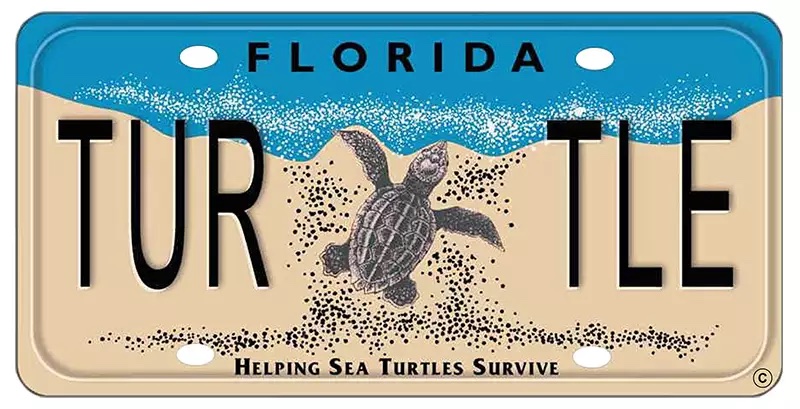
More than 100,000 vehicles sport the most popular conservation-minded specialty plate in Florida, which consistently raises over $1 million each year. The funds go to the Florida Fish and Wildlife Conservation Commission’s Marine Turtle Protection Program, which facilitates nest protection and sea turtle research and monitors coastal development.
Maryland

Maryland offers a whopping 989 specialty license plate options, the most by far of any state. Still, the number-one seller is the $20 “Treasure the Chesapeake” plate, featuring a blue crab and the William Preston Lane Jr. Memorial Bridge. As of this year, the inscription now reads “Protect the Chesapeake and Coastal Bays”—an intentional expansion of emphasis onto the state’s five other bays. Some 7 percent of all vehicles in the state sport the plate, which raised $20 million in the past five years alone. The money goes to the Chesapeake Bay Trust, which has funded waterway, stormwater, and habitat projects statewide.
Texas
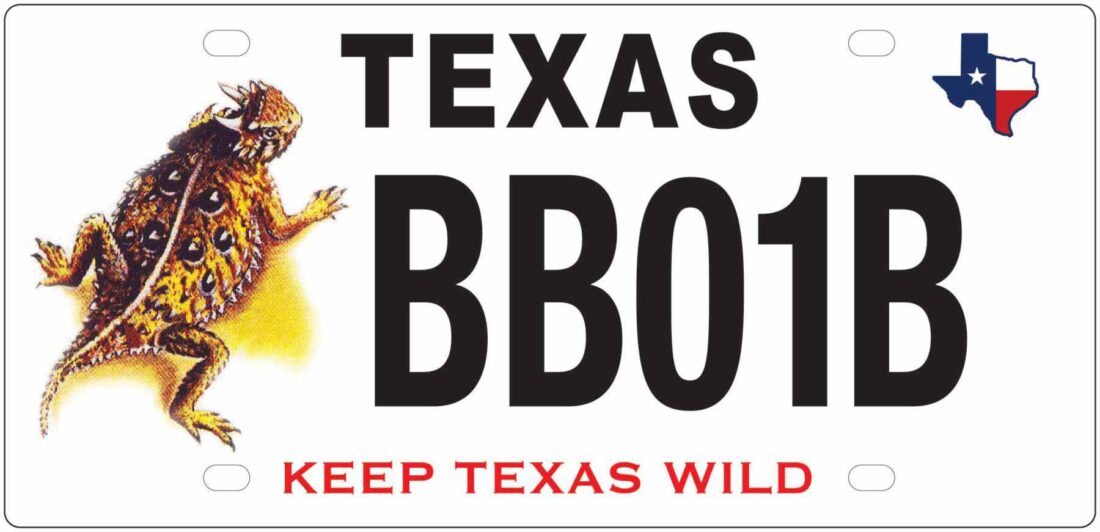
As the state reptile and the mascot of Texas Christian University, horned frogs are a beloved Lone Star State icon. As such, the Texas Parks and Wildlife Department offers a $25 license plate emblazoned with the strange reptile. (Other options include a monarch butterfly, rattlesnake, and hummingbird.) The money benefits Texas nongame wildlife protection in general; it has funded work at Bracken Cave Preserve, a horned lizard breeding and rearing program, and a study of pollinator decline, among other projects.
South Carolina
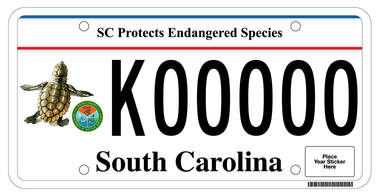
The South Carolina Department of Natural Resources currently sells four different designs, the most popular of which is the endangered species plate, which features a loggerhead sea turtle, the state reptile. Other wildlife offerings include a painted bunting, a red drum, and a white-tailed deer.
Tennessee, North Carolina
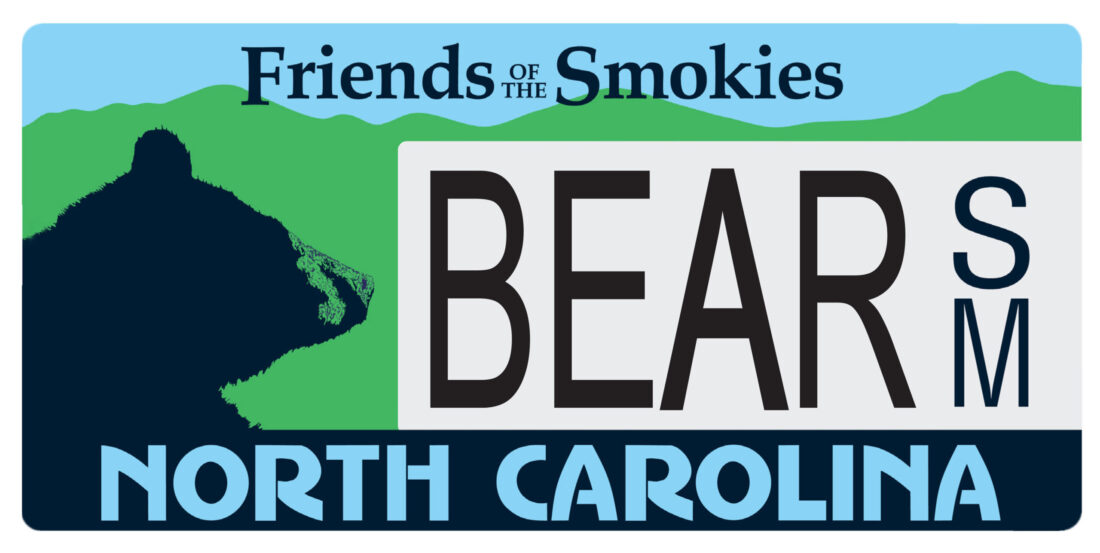
This $35 plate, featuring a black bear silhouette with the Smoky Mountains rolling behind it, represents the top-selling specialty license plate in Tennessee. (North Carolina offers a similar design.) Since 1998, it has raised $9 million in the Volunteer State, for Friends of the Smokies, a nonprofit dedicated to preserving Great Smoky Mountains National Park.
Virginia
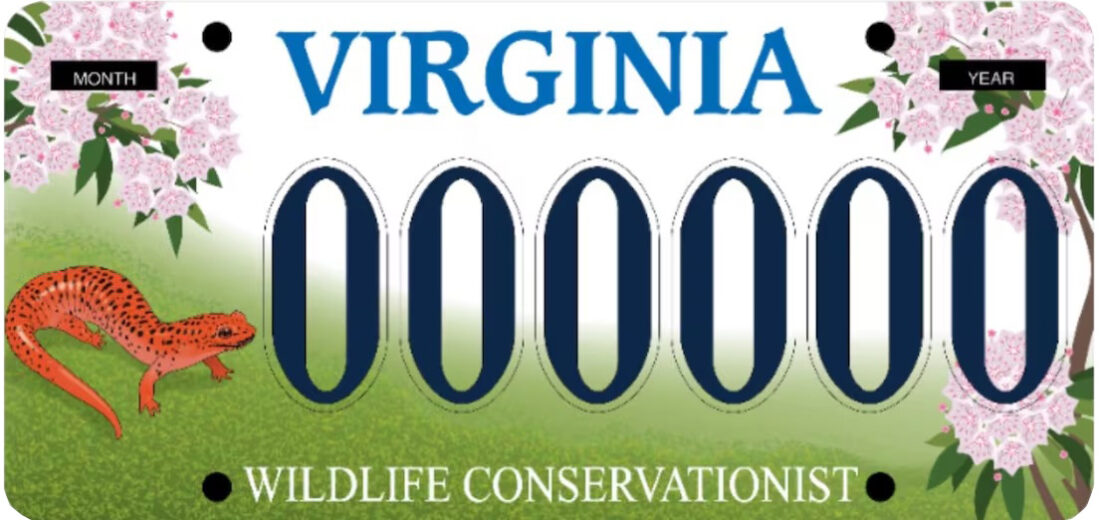
A red salamander, native to the Appalachian mountains and named the state salamander in 2018, graces this Virginia plate. It’s the latest installment in a series by the Virginia Department of Wildlife Resources that has showcased white-tailed deer and bald eagles, among other native creatures. Proceeds from the $25 plate go to the department’s wildlife resource management, research, and educational outreach programs.
Arkansas Game and Fish Commission
Arkansas
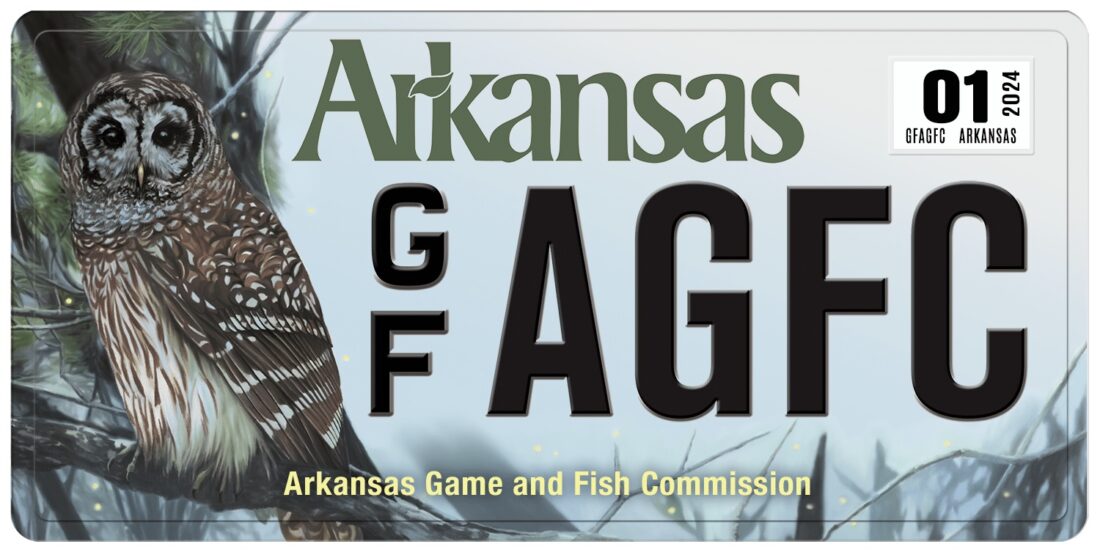
The Arkansas Game and Fish Commission unveils a new license plate each year, cycling through game and nongame species alike. This year’s $35 design features a barred owl drawn by the same local artist, Greta James, who has designed them all since 2017. Since the program’s inception in 2000, it has raised over $20.8 million for internships, scholarships, education exhibits, and other conservation education initiatives.
Florida
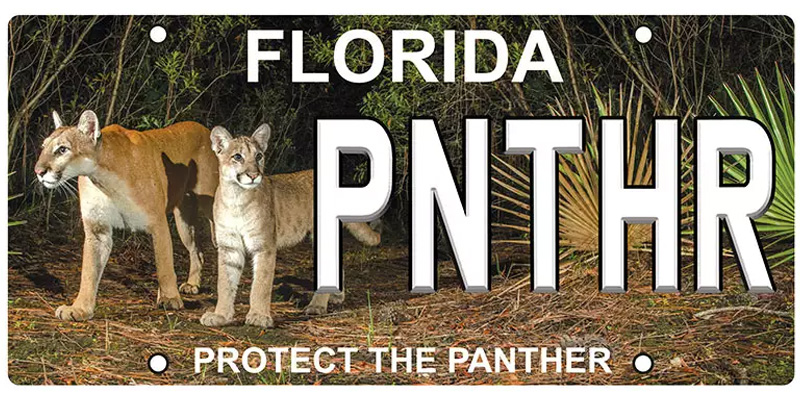
Florida panthers are one of the most endangered large carnivores in the country—just 200 roam South Florida, and biologists are hard at work trying to boost their numbers and restore their range to the rest of the state. The $25 fee from the Florida panther plate–which is based on a real photograph of a mother panther and her two kittens—goes toward the Florida Panther Research and Management Trust Fund, a key financial pipeline for biologists who track and study the big cats. Since its debut in 1991 (just after the highly popular manatee plate), it has raised some $30 million.
West Virginia

In 1996, West Virginia voters approved a constitutional amendment to earmark a portion of wildlife license plate proceeds for the state’s Wildlife Diversity Program. Over the years, the plates have featured the likes of a rose-breasted grosbeak, a black bear, a white-tailed deer, a brook trout, and an eastern bluebird. The deer plate has been the top-selling and most-renewed specialty design in the state since 2003, and the funds power research on endangered animals and plants, outreach in schools and libraries, and the development of wildlife viewing areas.

